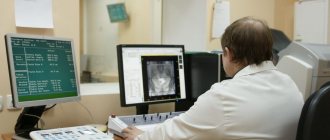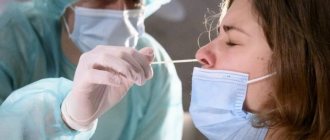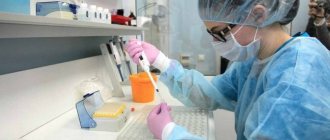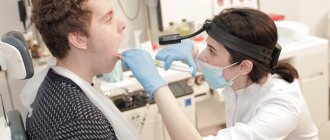Definition of cerebral palsy
Cerebral palsy (CP) is a neurological disease that affects the central nervous system and causes underdevelopment of the brain.
Cerebral palsy manifests itself as a violation of movements, balance and intelligence, and is also often accompanied by epilepsy. Cerebral palsy is the most common cause of disability in childhood. According to WHO, the prevalence of cerebral palsy in the world is 1-2 cases per 1000 births. In Russia – 2.2-3.61 cases per 1000 newborns. Moreover, among premature babies this pathology occurs approximately 10 times more often. In general, approximately 1 in 400–500 people in Russia has cerebral palsy.
Recommendations for parents of a child with cerebral palsy
Shemyatovskaya Olga Dmitrievna, neurologist at the DocMed clinic:
- Find a support group (parent groups).
- Rest on time and don’t forget about yourself.
- Find a good neurologist who is guided by the principles of evidence-based medicine.
- Find a good physical therapist who is guided by the principles of evidence-based medicine (a neurologist can recommend him).
- Find a good pediatrician who is guided by the principles of evidence-based medicine, has worked with children with cerebral palsy and is not afraid of them (he, together with a neurologist, will treat concomitant diseases).
- Do not try to look for quick alternative ways and do not believe charlatans.
- Set realistic rehabilitation goals with your team and work towards achieving them.
Is it possible to detect cerebral palsy during pregnancy?
When a fetus develops cerebral palsy, there are no symptoms. Even in newborn children, the disease cannot be detected immediately, but after some time. Sometimes there are situations when a healthy child is injured during a pathological birth, which is why he develops a disease. If there are risk factors that can cause the development of this disease, a diagnosis should be made that will most likely be able to determine the presence or absence of the disease in the child.
Causes of cerebral palsy
Cerebral palsy in 57% of cases is associated with an anomaly or disorder of brain development that occurs before the child is born, approximately 40% is due to pathological childbirth. Only about 3% of all cases of cerebral palsy are associated with traumatic brain injury, neuroinfections or other pathologies that occur after childbirth. Also, in some observations, the cause of the pathology remains unknown.
Factors that can potentially lead to problems with brain development include:
- Pregnancy pathologies: fetoplacental insufficiency, premature placental abruption, preeclampsia and eclampsia, nephropathy in pregnant women, Rh conflict.
- Intrauterine infections: cytomegalovirus, rubella, toxoplasmosis, herpetic diseases, syphilis, gonorrhea.
- Somatic diseases of the mother: diabetes mellitus, hypothyroidism, congenital and acquired heart defects, arterial hypertension.
- Use of toxic medications during pregnancy: some antibiotics and hormonal drugs, cytostatics, barbiturates, sulfonamides.
Is there a connection between cerebral palsy and vaccinations?
Vaccines, like many other medicines, contain preservatives and auxiliary chemicals. They have a number of side effects and contraindications for use. However, there is no scientific evidence linking properly vaccinated mother or child with cerebral palsy.
Is it visible on ultrasound?
It is impossible to reliably determine cerebral palsy using ultrasound during pregnancy. Only the combination of all the above factors allows us to assume possible violations.
Note that this also includes Rh conflict. Against this background, hemolytic disease may develop. And then severe jaundice occurs. The baby is vomiting, may have convulsions, and his general condition is impaired. The sucking reflex is not developed. As a result, the nervous system suffers, which will adversely affect the further development of the child.
Now you know whether it is possible to determine cerebral palsy during pregnancy by ultrasound. No one will give an exact guarantee. The pathology may not be noticed. In addition, heredity is important. And the above factors are just a part. In fact, there are many more of them. Conventionally, the reasons can be divided into two groups - postpartum and birth.
The diagnosis of cerebral palsy is not made during pregnancy, but after childbirth some time later. Usually by two years it becomes clear. But even earlier, parents will see that something is wrong with the child. He will be developmentally delayed. If the impairments are severe, the child will not be able to sit or walk, which will certainly become noticeable before two years of age.
Who is at risk?
Factors that indicate an increased risk of developing cerebral palsy during pregnancy include:
- Multiple pregnancy and death of one of the fetuses.
- Low birth weight – less than 2.5 kg.
- Premature birth (before 28 weeks). The earlier the birth occurs, the higher the likelihood of developing cerebral palsy.
An increased risk of developing cerebral palsy during childbirth is associated with the following factors:
- Breech presentation of the fetus.
- Rapid birth.
- Narrow maternal pelvis.
- Large fruit.
- Excessively strong labor activity.
- Prolonged labor.
- Discoordinated labor activity.
- Long anhydrous period before childbirth.
- Umbilical cord entanglement.
Premature birth increases the risk of developing cerebral palsy in a child.
Photo: wavebreakmedia_micro / freepik.com Also, the likelihood of developing cerebral palsy after childbirth increases in the presence of the following diseases and disorders:
- Bacterial meningitis.
- Viral encephalitis.
- Severe or untreated jaundice.
Premature birth and prevention of cerebral palsy
Shemyatovskaya Olga Dmitrievna, neurologist at the DocMed clinic:
“The causes of cerebral palsy can be anything that has a negative impact on the developing brain of the fetus or newborn (premature birth, intrauterine growth retardation, multiple pregnancy, infections, asphyxia, untreated maternal hypothyroidism, congenital malformations, perinatal stroke).
Often a specific cause is not identified. Prevention measures:
- reducing the likelihood of premature birth;
- prenatal administration of magnesium sulfate to women at risk of preterm birth (reduces the incidence and severity of cerebral palsy according to research results);
- clamping the umbilical cord no less than 30-60 seconds after birth - in children who do not need emergency resuscitation measures (to reduce the risk of intraventricular hemorrhage);
- maintaining adequate ventilation (including starting mechanical ventilation on time);
- timely and adequate feeding;
- seizure control;
- treatment of any causes that worsen the condition;
- therapeutic hypothermia (improves survival and outcomes for babies with asphyxia).”
Why does it occur
There are several versions that cause such a terrible disease in children. Below we will look at each of the reasons.
Hypoxia
Some areas of the baby's brain may suffer from a lack of oxygen. This happens with various complications, which include circulatory disorders, changes in the umbilical cord, fetoplacental insufficiency and other pathologies.
Hypoxia causes damage to the nervous system of the unborn child, and reflexes are formed incorrectly. The baby cannot keep his balance. The muscles are unbalanced, motor activity is impaired.
Injuries
In case of difficult childbirth, injuries are also possible. They occur during rapid labor or, on the contrary, during prolonged labor. If labor is sluggish, then serious problems can also arise.
Fetal pathologies
The baby may lie feet first, making it difficult for him to pass through the birth canal normally.
Oligohydramnios, high fetal weight, as well as prematurity are factors due to which, in the future, the child’s health is at risk.
Diseases and characteristics of women
When giving birth to a child after the age of 30-35, a woman is at risk. But things don't always end in problems. Patients in the older age group are more likely than others to ask the question whether cerebral palsy can be determined during pregnancy by ultrasound.
A narrow pelvis, small size of the uterus and childbirth later than the specified date lead to complications. This also includes toxicosis in the later stages.
Chronic diseases of a woman also affect possible abnormalities in the child. We are talking about hypertension, obesity, endocrine and cardiovascular pathologies. Taking medications always affects the child’s health.
An unhealthy lifestyle increases the risk of having a sick baby. These include trauma, emotional overload, drug, nicotine and alcohol addiction.
Premature birth
The lower the child’s weight after birth, the more abnormalities are detected. Everything is connected with the immaturity of organs and systems; they cannot cope with their work. Modern medicine is on guard for such cases, so there is no reason to worry ahead of schedule.
Pathogenesis
Cerebral palsy is the result of intrauterine or birth damage to the brain. The brain is a complex structure that is responsible for a huge number of functions, so the manifestations of cerebral palsy vary and depend on which parts of the brain are affected.
It is customary to distinguish three main pathogenetic mechanisms for the development of cerebral palsy: structural changes in the brain, intracranial hemorrhage and periventricular leukomalacia.
Structural changes in the brain that occur in more than a third of children with cerebral palsy include:
- Microgyria is a developmental defect of the brain in which a large number of small convolutions are formed.
- Pachygyria is an anomaly characterized by the formation of a small number of wide and flat convolutions in the cerebral cortex.
- Heterotopia is a general name for defects in which tissues or parts of organs develop in an atypical location.
- Hypoplasia is a general underdevelopment of a tissue or organ.
With these changes, the transmission of nerve signals between areas of the cerebral cortex and other parts of the body is disrupted.
Intracranial hemorrhages directly lead to damage to the centers of the cerebral cortex. Also, as a result of damage to blood vessels, the supply of nutrients and oxygen to other areas of the central nervous system is disrupted.
Periventricular leukomalacia is a form of damage to the white matter of the cerebral hemispheres. White matter is a connecting link between the centers of the cortex, as well as between the central nervous system, other organs and structures, including skeletal muscles. Accordingly, its defeat leads to disruption of the central nervous system and the impossibility of full functioning of the body.
Forms of cerebral palsy
Cerebral palsy can take on different forms, including: spastic, dyskinetic, ataxic and mixed variants¹.
Spastic form
The most common type of cerebral palsy accounts for up to ¾ of all cases. The main manifestation is hypertonicity (increased tone) of skeletal muscles. The degree of severity can vary, from mild awkwardness, which is felt only with precise movements, to severe paralysis. Has 3 subspecies:
Hemiplegia
With spastic unilateral cerebral palsy (hemiplegia), an increase in muscle tone is observed in the right or left half of the body. The arms are usually more affected than the legs. Some patients experience delayed mental and speech development, and seizures may occur. At the same time, the opportunity to acquire the necessary motor skills is preserved.
Bilateral hemiplegia or tetraplegia (quadriplegia)
Spastic diplegia, or "Little's disease", is manifested by simultaneous damage to both arms or legs. In addition to hypertonicity, it is characterized by deformities and contractures (restrictions in joint mobility due to soft tissue pathologies), delayed development of speech and intelligence, visual and hearing impairments.
Diplegia
Double hemiplegia, or spastic tetraparesis, is accompanied by damage to all extremities, but often the severity of hypertonicity is higher in the arms. This form is often accompanied by strabismus and decreased visual acuity, hearing and swallowing impairment, speech and cognitive deficits, and epilepsy.
Figure 1. Subtypes of spastic forms of cerebral palsy. Image: rob3000/Depositphotos
Dyskinetic form
With the dyskinetic variant of cerebral palsy, involuntary movements occur, called hyperkinesis, which can be combined with both increased and decreased muscle tone. Clinically manifested by a violation of normal body posture and characteristic variants of hyperkinesis:
- Athetosis – slow, worm-like movements of the arms and legs.
- Chorea - fast and jerky movements in the limbs (video 1).
- Torsion disorders - atypical turns of the torso, head and changes in body posture.
Hyperkinesis is usually noticeable only during movements and completely disappears during sleep. As with other forms, speech, hearing and swallowing disorders often occur. Intellect, as a rule, does not suffer.
Video 1. Choreic hyperkinesis.
Ataxic form
The key manifestation of this form of cerebral palsy is impaired balance and coordination of movements, ataxia. This looks like sudden, imprecise movements, and an inability to walk smoothly. May be accompanied by tremor - involuntary shaking of the head or limbs. Intelligence deficits may be mild or profound.
Mixed variants of cerebral palsy
In some cases, the development of cerebral palsy is caused by combined or multiple brain lesions, which leads to the formation of mixed forms of the disease. The most commonly observed combinations are:
- Spastic-atactic.
- Spastic-hyperkinetic.
- Atactico-hyperkinetic.
Stages of the disease
Depending on the age of the child and the symptoms of cerebral palsy that arise in him, it is customary to distinguish the following stages of development of this pathology¹:
- Early. Includes the period from birth to 4-5 months. Manifested by stiffness or lethargy, periodic shudders, convulsive seizures, inhibition of innate reflexes. These phenomena are often combined with severe breathing disorders, heartbeat, and increased intracranial pressure.
- Initial residual. Covers ages from 6 months to 3 years. At this stage, delays in mental and motor development begin to appear, which is why the skills of sitting, crawling, walking and speaking are formed late.
- Late residual. Occurs after 3 years. With it, the signs of the previously mentioned forms of cerebral palsy are finally formed, as well as persistent changes - muscle contractures and deformities. Speech and intellectual impairments become apparent.
Symptoms of cerebral palsy
Signs and symptoms of cerebral palsy vary greatly depending on the form of the disease and the characteristics of the central nervous system. The most typical manifestations³:
- Changes in muscle tone - increased tone (hypertonicity) or weakness of skeletal muscles (hypotonicity).
- Stiffness of movement - spasticity.
- Lack of balance and muscle coordination.
- Tremors or involuntary movements.
- Delay in the development of motor skills: sitting, crawling, walking.
- Pain when moving.
- Deformations of the limbs, their different lengths or overall size.
- Deformations of the chest and spinal column.
- Walking abnormalities, including: walking on your toes (video 2), crouching gait, excessively wide steps, asymmetry of steps.
- Excessive salivation, problems swallowing, weak sucking reflexes.
- Delays in speech development, incorrect pronunciation of words.
- Learning difficulties.
- Inability to make precise movements, such as fastening a button.
- Endocrine diseases: obesity, growth retardation, hypothyroidism.
With cerebral palsy, the pathological process may affect the entire body, or may be limited to one limb or side of the body. However, CNS lesions do not change over time, so symptoms usually do not worsen with age.
Video 2. Jumping gait, walking on the toes with cerebral palsy.
The earliest signs of cerebral palsy
The first signs of the disease in the early period (from 3 to 6 months) include:
- Lagging of the head from the body when lifting the baby from the crib.
- Movements of the arms and legs occur jerkily, with effort, or are almost completely absent.
- When held in arms, the baby arches his back and neck as if trying to push him away from himself.
- When rising from the crib, the legs become excessively tense and often cross each other with “scissors.”
- By the age of 3-4 months, a child’s reflexes do not disappear, preventing him from developing and walking.
At the age of 6-10 months, signs of cerebral palsy may include:
- No side turning when the child is lying on his back.
- Inability to join hands, visible difficulty in bringing fingers to mouth.
- Reaching for a toy with only one hand, while the other is clenched into a fist.
- When crawling - pushing the child away with only one arm and leg, dragging the limbs.
Some symptoms are not easy for parents to notice, but obvious markers should cause caution and be a reason to contact a neurologist. You should consult a doctor if the child cannot lift and does not hold his head by 3 months of life, cannot roll over by 6 months, does not crawl or sit at 10 months
Newborn reflexes that should disappear if the baby is healthy. Photo: Samuel Finlayson / Wikipedia (CC BY-SA 4.0)
A – Asymmetric cervical tonic reflex.
B – Grasping reflex. Photo: Wikipedia (Public Domain)
C – Support reflex. Photo: daihocyduoc/YouTube
D – Galant reflex. Photo: betapicts/YouTube
Brain abnormalities associated with cerebral palsy may also contribute to other neurological problems, including:
- Strabismus, visual and hearing impairment due to pathology of the cranial nerves.
- Limited intellectual capabilities.
- Convulsive seizures, epilepsy.
- Impaired tactile perception and pain.
- Urinary incontinence.
Not all children with cerebral palsy have intellectual disabilities. It is often difficult to assess the mental abilities of a child who has difficulty speaking and performing even simple actions. But this does not mean there is an intellectual deficit.
When to see a doctor?
With cerebral palsy, timely diagnosis and early initiation of correction are important. Therefore, it is necessary to seek advice from a specialist at the first suspicion of the development of this pathology. Most often these are: disturbances in skeletal muscle tone, spontaneous movements, abnormal body turns, swallowing disorders and strabismus.
In most cases, individual phenomena, even if they are not associated with cerebral palsy, are alarming symptoms that can be caused by other serious pathologies.
How to distinguish physiological muscle tone from early signs of cerebral palsy?
Shemyatovskaya Olga Dmitrievna, neurologist at the DocMed clinic:
“Babies with the risk factors described above should be carefully examined and examined by a neurologist (perhaps more often than children without risk factors). Diagnosis is usually made between 12 and 24 months of age. Pathological tone differs from physiological tone in severity. But at an early age (up to 3-4 months), it is still very difficult to distinguish between them. It is important to note that although the cause of cerebral palsy does not progress, symptoms and functionality continue to develop as the nervous system develops, that is, signs of cerebral palsy may not be noticeable at 6 months, but become very prominent at 12 months.”
Causes of cerebral palsy, risk factors
It is worth noting that it is still possible to identify deviations that contribute to the development of the disease. Their development is influenced by certain events and conditions that exist or took place in the mother’s life in the past. Risk factors:
Risk factors:
- birth injuries and complications;
- mother's age (under 18 and over 40);
- abuse of bad habits;
- incompatibility of blood between mother and child;
- hypoxia - intrauterine or postpartum;
- acute and chronic forms of diseases;
- hemolytic disease of the newborn - jaundice;
- ischemic stroke;
- taking certain types of drugs;
- infections, viruses - herpes virus, cytomegalovirus, rubella virus;
- heredity.
All these factors are the main cause of dysfunction of the areas of the brain responsible for balance and reflexes.
“According to statistical data, in most cases, cerebral palsy is diagnosed among boys; the course of the disease is more severe and more complicated.”
Complications of cerebral palsy
Complications develop mainly in the late residual stage and include, first of all, orthopedic pathology - the formation of joint-muscular contractures, deformities and shortening of the limbs, subluxations and dislocations of joints, scoliosis. All of them lead to restriction of normal life activities and the inability to self-care.
Increased load and abnormal position of body parts against the background of constant muscle tension can lead to degenerative changes in bones and the formation of osteoarthritis. Also, these changes, in combination with medications often used for cerebral palsy, cause a decrease in bone density and increased fragility (osteopenia).
With pronounced defects and a predominantly sedentary lifestyle, the likelihood of developing a number of diseases increases, including:
- Pneumonia.
- Inhalation of food and saliva.
- Urinary system infections.
- Neurogenic constipation and chronic dysfunction of the gastrointestinal tract.
- Bedsores.
In the presence of speech defects and intellectual deficits, the child’s education process is complicated. Also, children with cerebral palsy, due to existing physical and mental differences, may be prone to depressive disorders caused by social isolation.
Diagnosis of cerebral palsy
Since cerebral palsy is a collective concept, there are no exact diagnostic criteria for it. In most cases, a preliminary diagnosis is made on the basis of existing pathological changes. You should be wary of:
- Low Apgar score. It is used immediately after birth to assess the baby's heart rate, breathing, muscle tone, reflexes and skin color. The norm is considered to be 7-10 points, and severe deviations are considered to be 0-2 points.
- Violation of muscle tone.
- Pathological motor activity.
- Delay in psycho-physical development.
To make a final diagnosis, the following studies may be performed:
- Electromyography (EMG). Allows you to measure muscle tone and determine the nature of its changes, to distinguish cerebral palsy from diseases of the peripheral nervous system, including myopathies and myasthenia.
- Electroencephalography (EEG). When recording the activity of various parts of the cerebral cortex, its anomalies and epileptic foci are displayed.
- Study of evoked potentials. Allows you to assess the state of the visual and auditory nerve pathways, deep sensitivity pathways (vibration sensitivity, pressure sensation, muscle-articular sensation), and study the functioning of the autonomic nervous system.
- Ultrasonography of the brain (ultrasound). It is carried out through not yet overgrown fontanelles, which finally close at 1.5 years. Used to identify structural abnormalities of the central nervous system.
- Magnetic resonance imaging (MRI) of the brain. Makes it possible to study the structural features of the brain, cerebral ventricles and identify their morphological changes and developmental defects.
- X-ray of the hip joints. It is used to monitor the development of these joints, identify subluxation and decide whether surgical treatment is necessary.
Additional diagnostics
In order to suggest the presence of cerebral palsy in the fetus, additional studies are carried out.
In addition to ultrasound scanning, it may be necessary to determine the heart rate and the activity of the contractile function of the uterus. Tests are also performed to help correlate movements with cardiac activity. Blood flow in the fetal vessels is important, as is electrocardiography.
Thanks to these studies, it is possible to notice hypoxia in time and take measures to reduce the risk of cerebral palsy due to lack of oxygen. By the way, hypoxia is a dangerous condition that leads to a variety of adverse consequences. Although cerebral palsy is not visible on an ultrasound during pregnancy, oxygen starvation can be determined using the above studies.
Serious brain pathologies will be visible on ultrasound scans. Often, no obvious abnormalities are found, and after the birth of the child, based on its development, it becomes clear whether there is paralysis or not. The diagnosis will be made by a neonatologist in conjunction with a neurologist.
Basic approaches to the treatment of cerebral palsy
Helping a child with cerebral palsy involves the involvement of a team of various medical, pedagogical and social specialists. In this case, the active participation of parents plays an important role. Continuity of care is key.
Therapeutic exercise for cerebral palsy. Photo: olesiabilkei / Depositphotos
Rehabilitation therapy
Cerebral palsy is an incurable disease. Therefore, the early start of complex therapy plays an important role in the development of motor and speech skills available to the child. The rehabilitation program is selected individually, based on existing defects.
The basis of rehabilitation for cerebral palsy is massage and physical therapy (physical therapy), which should be carried out daily. Therefore, the child’s parents should master basic skills and exercises.
Motor activity skills are acquired through kinesiotherapy. It consists of repeated repetitions of normal movements that must be mastered. The most effective approaches are Vojta therapy, Bobath therapy, and PNF therapy.
Also, as part of rehabilitation, technical means are used: orthoses, shoe inserts, crutches, walkers, wheelchairs, etc. Their purpose is to compensate for physical defects, for example, differences in the length of limbs, deformities and motor disorders.
What are orthoses?
An orthosis is a special medical device that allows you to change the structural and functional characteristics of the neuromuscular and skeletal system. They help relieve, fix or correct the functions of a damaged joint or limb. These include a variety of corsets, bandages, devices, special shoes and insoles.
With cerebral palsy, plantar flexion of the foot and ankle is often observed, which is associated with excessive tension in the calf muscles. This leads to changes in the structure of the ankle joint and foot, which causes phenomena such as valgus (inward tilt of the foot) or varus (outward tilt of the foot).
The following orthoses are used to correct these conditions and other lower extremity deformities:
- AFO (ankle and foot orthoses) – on the ankle joint and foot.
- KAFO (knee ankle foot orthoses) – on the knee, ankle joint and foot.
The purpose of orthoses is to help with movement and motor skills. However, they are not aimed at treating or normalizing muscle tone, so they cannot be the only methods of correction for cerebral palsy.
Social and pedagogical rehabilitation
The main goal of rehabilitation treatment for a child with cerebral palsy is adequate social adaptation. It requires not only the ability to move, but also communication skills, integration into the environment of peers, obtaining an education and profession.
In this regard, the treatment complex must include:
- Occupational therapy. Allows you to develop skills necessary for everyday life (dressing yourself, performing hygiene procedures, etc.)
- Logotherapy. Helps solve swallowing problems and cope with speech problems. In this case, auxiliary devices can be used: computers with speech synthesizers or images of objects and actions of everyday life, with the help of which the child has the opportunity to explain his needs. If the speech deficit is severe, the patient is taught alternative methods of communication, such as sign language.
- Art therapy and rehabilitation through sports. Contribute to the formation of motivation for treatment and social integration.
Conductive pedagogy is also widely used. It combines pedagogical and rehabilitation goals. Rhythmic sounds and songs are widely used during classes. Rhythm and song lyrics establish a background rhythm of motor activity that aids the child's learning and motivation4.
The use of animals in the rehabilitation of children with cerebral palsy
An effective approach is the involvement of animals in the rehabilitation process of children with cerebral palsy - animal-assisted therapy. It is based on a combination of kinesiotherapy and a positive emotional attitude4.
The main types of animal-assisted therapy include:
- Hippotherapy – classes with horses.
- Canistherapy – communication with specially trained dogs.
- Dolphin therapy - swimming in a pool with dolphins.
Animal-assisted therapy is widespread among children with cerebral palsy. Photo: TUT.BY / YouTube
Drug treatment
Medicines for cerebral palsy are used to suppress certain symptoms of the disease and play a supporting role. For concomitant epilepsy, anticonvulsants (anticonvulsants) may be prescribed. Increased muscle tone is reduced with the help of antispastic agents. In order to improve the functioning of the central nervous system, nootropics, metabolic drugs (ATP, amino acids, glycine), antidepressants, tranquilizers, antipsychotics, and vascular drugs are used.
Increased salivation and nutrition of a child with cerebral palsy
Shemyatovskaya Olga Dmitrievna, neurologist at the DocMed clinic:
“Approaches to reducing salivation usually include behavioral therapy, medications first and, if not effective, botulinum toxin injections into the salivary glands and surgery.
In some children, drooling improves with age. Children with cerebral palsy are at high risk of food entering the respiratory tract (aspiration). Therefore, you need to feed little by little, choose the right consistency and make sure you don’t choke. If a child constantly chokes, coughs, or vomits immediately, after or during meals, moreover, he hardly gains weight or gains too much - this is a reason to discuss changing your feeding strategy with your pediatrician. Sometimes the solution is feeding through a tube with special mixtures.”
Botulinum therapy
For local hypertonicity and deformation of the limbs, an injection of botulinum toxin, the same one that is widely used in cosmetology to get rid of wrinkles, is considered an effective approach. It blocks nerve signals traveling to the muscles, thereby relaxing them. Due to this, muscle tone decreases. The duration of the effect is 3-6 months or more, after which the injection is repeated.
Botulinum therapy can be used in combination with exercise therapy, helping to reduce pain during exercise, optimize movements and facilitate the use of orthoses.
Intrathecal administration of baclofen
For severe motor disorders and severe spasticity in cerebral palsy, intrathecal (under the spinal cord) administration of baclofen using a pump can be used¹.
The purposes of using this drug are:
- Decreased muscle tone.
- Reducing pain.
- Improved positioning in sitting and lying positions.
- Facilitation of care and use of orthoses.
- Prevention of contractures and dislocations.
- Improving quality of life.
Orthopedic surgery
Orthopedic surgeries are indicated for all types of movement disorders. The more pronounced the spasticity and defects, the earlier surgical intervention is performed. As a rule, operations are performed starting from the age of three. The purpose of this treatment is to eliminate and prevent deformities, contractures and dislocations, stabilize posture, and optimize movements.
Physiotherapy
Physiotherapeutic procedures are widely used as an additional treatment for cerebral palsy. Most often used:
- Oxygen barotherapy.
- Electrical stimulation of nerves and muscles.
- Medicinal electrophoresis.
- Mud therapy.
- Thermal procedures.
- Hydrotherapy.
- Underwater massage shower and whirlpool baths.
- Laser therapy (infrared laser).
Prognosis and prevention
The prognosis regarding independent movement and self-care directly depends on the form of cerebral palsy and the severity of its symptoms. Adults with cerebral palsy who have intelligible speech, an IQ above 80 and the ability to move independently are employed in 90% of cases where people without health limitations work.
Life expectancy with cerebral palsy varies greatly. Patients with an IQ of 20 in half of the cases do not reach the age of 18 years, while with an IQ of more than 35, 92% of patients with cerebral palsy live more than 20 years¹.
In general, life expectancy and quality of life largely depend on the quality and timeliness of medical, educational and social interventions. Social isolation and inability to get needed help can have an even greater negative impact on a child's development than the initial CNS damage¹.
Prediction of the life of a child with cerebral palsy is carried out using the gross motor function classification system (GMFCS). It is based on the quality of performing basic movements and maintaining posture for different age groups: up to 2 years, from 2 to 4 years, from 4 to 6 years, from 6 to 12 years, from 12 to 18 years. The purpose of its application is to objectively assess the level of motor impairment in children with cerebral palsy based on their functionality, need for assistive devices and ability to move.
This classification includes 5 levels:
- Level 1 – walking without restrictions;
- Level 2 – walking with some restrictions;
- Level 3 – walking is possible only with the use of mobility aids (manual);
- Level 4 – independent movement is limited, motorized vehicles can be used for movement;
- Level 5 – movement is only possible in a manual wheelchair.
Figure 2. Levels of mobility in children with cerebral palsy.
Image: CanChild /Vimeo Prevention of cerebral palsy can be divided into prenatal (during pregnancy, perinatal) and postnatal. Tips to prevent cerebral palsy include:
- Monitoring fetal weight and then selecting the appropriate method of delivery (physiological birth or cesarean section). This reduces the risk of birth trauma and hypoxia during childbirth.
- Identification and correction of Rh conflict.
- Early diagnosis and treatment of chronic diseases of a pregnant woman.
- Adequate nutrition for the expectant mother, including the use of necessary supplements.
- Quitting the use of alcohol, tobacco products and drugs.
- A set of measures to prevent premature birth.
- Refusal to tightly swaddle a newborn.
Methods for preventing cerebral palsy
Just like most other diseases, the main way to prevent it is to lead a healthy lifestyle. First of all, you need to give up bad habits (smoking, alcoholism, etc.), and before planning a pregnancy, undergo a full medical examination to eliminate the risk of chronic diseases. If a pregnant woman has viral or bacterial diseases, it is necessary to treat them in the second trimester, when medications no longer have such a detrimental effect on the child.
During pregnancy, it is important to regularly monitor hemoglobin levels and other health indicators. Throughout pregnancy, it is important to protect yourself from diseases such as acute respiratory viral infections, influenza, herpes, and other infections, as well as protect yourself from chemical or radioactive exposure.
During pregnancy, a woman may experience a variety of changes in her body, but such disorders do not always cause the development of cerebral palsy in the child. The natural mechanisms of protection of the fetus protect the baby from negative influences for a certain time. It is important to immediately seek medical help if any prerequisites for illness arise.








